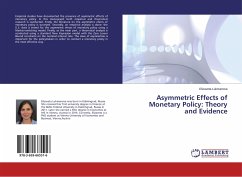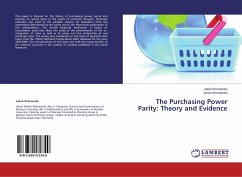Empirical studies have documented the presence of asymmetric effects of monetary policy. In this monograph both empirical and theoretical research is conducted. Firstly, the literature on the asymmetric efects of monetary policy is surveyed. Secondly, an empirical analysis is done: the U.S. data is tested for the asymmetric efects of monetary policy using a Markov-switching model. Finally, as the main part, a theoretical analysis is conducted using a standard New Keynesian model with the Zero Lower Bound constraint on the nominal interest rate. The issue of asymmetries is important for the policymakers in order to conduct a monetary policy in the most effective way.
Bitte wählen Sie Ihr Anliegen aus.
Rechnungen
Retourenschein anfordern
Bestellstatus
Storno








